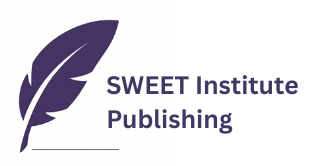The Science of Reading as Healing
“We read to know we are not alone.” — C. S. Lewis
Scene: A shared moment after reading.
The three sit in comfortable silence. Between them, an open book rests on the table — its words still hovering in the air like echoes of something understood more by the heart than the mind.
Dr. Dubin: Isn’t it remarkable how a book can make you feel seen — even when no one else is in the room?
Dr. Sidor: That’s the beauty of it. The brain doesn’t know the difference between experience and imagination. When we read, we’re not just watching someone else’s story — our neurons are living it.
Reader: So, when a story moves me to tears or gives me courage… that’s not just emotion? That’s biology?
Dr. Sidor: Exactly. Let’s explore that.
Part I: The Brain on Story
Dr. Sidor: Every time you open a book, a symphony of neural events begins. Functional MRI studies show that reading activates the brain’s default-mode network — the same system we use for reflection, empathy, and imagination (Spreng et al., 2009).
Dr. Dubin: Which means, when you read, you enter the same mental space where therapy often happens — the place of connection and curiosity.
Dr. Sidor: And it goes deeper. When you follow a character’s experience, your mirror neurons fire as if you were living it yourself (Mar & Oatley, 2008). In one study, people who read a book for nine days showed increased neural connectivity in regions related to language and sensory imagery — the brain literally changed its wiring (Berns et al., 2013).
Reader: So, a story can reshape the brain?
Dr. Sidor: Yes. Words can build new pathways — pathways of empathy, courage, and self-understanding.
Part II: How Healing Happens
Dr. Dubin: Think of it this way, every time we read, we practice being human.
Reader: Practice?
Dr. Dubin: Yes — emotional rehearsal. Through a character’s struggle, we safely feel grief, anger, forgiveness, and hope. That’s emotional regulation in action (Green et al., 2004).
Dr. Sidor: At the same time, our thinking patterns begin to shift. That’s called cognitive restructuring — replacing rigid or limiting beliefs with new possibilities (Cuijpers, 1997; Gregory et al., 2004).
Reader: And meaning? Some stories don’t just comfort — they reframe everything.
Dr. Dubin: That’s narrative coherence (McAdams, 2001). When we make sense of experience through story, we give our suffering a place, and that makes healing possible.
Part III: The Chemistry of Calm
Dr. Sidor: You can even measure it biochemically.
When a story moves us:
Oxytocin, the bonding hormone, rises — that’s empathy and trust (Zak, 2013).
Cortisol, the stress hormone, drops — reading six minutes can reduce stress by 68% (University of Sussex, 2009).
Dopamine surges when we reach resolution — that’s hope, curiosity, reward (Berns et al., 2013).
Dr. Dubin: In other words, reading is a form of self-regulation. It is a reset button for the nervous system.
Reader: No wonder some books feel like therapy.
Part IV: Reflection as Integration
Dr. Sidor: But here’s the key — reading alone isn’t enough. Integration happens when you pause and reflect. Ask yourself: “What part of me recognizes this character?” “What belief is this story challenging in me?”
Dr. Dubin: That’s where bibliotherapy becomes transformation. Reflection moves the learning from the conscious layer of thought into the preconscious and unconscious layers — until it lives inside you.
Reader: So it’s not about finishing the book; it’s about letting the book finish me.
Dr. Sidor: Precisely.
Part V: From Reading to Being
Dr. Dubin: Neuroscientist Maryanne Wolf calls reading a “biologically unnatural act” — yet, once mastered, it reorganizes the brain itself (Wolf, 2018). That’s what bibliotherapy leverages. Each sentence is a rehearsal; and each reflection a new neural circuit.
Dr. Sidor: Over time, these repetitions strengthen pathways of resilience, creativity, and meaning — the very architecture of mental health.
Reader: So, healing through reading isn’t metaphor; it’s method.
Dr. Sidor: And it’s available to everyone with a book and an open heart.
Reflection Prompts
What story has changed the way you feel about yourself or others?
When did you last recognize yourself in a character?
How might you make reading a daily act of calm and connection?
Conclusion
Dr. Dubin: Reading isn’t escape; it’s encounter. Through story, we meet our fears, our hopes, our humanity.
Dr. Sidor: The brain reads; but the soul listens. And in that listening, something ancient and modern converge: the science of healing through words.
Reader: Then every page can become a doorway.
Dr. Sidor: Yes. And what’s on the other side — is you.
Selected References
Berns, G. S., Blaine, K., Prietula, M. J., & Pye, B. E. (2013). Brain Connectivity, 3(6), 590–600.
Cuijpers, P. (1997). Journal of Behavior Therapy and Experimental Psychiatry, 28(2), 139–147.
Green, M. C., Brock, T. C., & Kaufman, G. F. (2004). Communication Theory, 14(4), 311–327.
Kidd, D. C., & Castano, E. (2013). Science, 342(6156), 377–380.
Mar, R. A., & Oatley, K. (2008). Perspectives on Psychological Science, 3(3), 173–192.
McAdams, D. P. (2001). Review of General Psychology, 5(2), 100–122.
Spreng, R. N., Mar, R. A., & Kim, A. S. (2009). Journal of Cognitive Neuroscience, 21(3), 489–510.University of Sussex. (2009). Mindlab International Study.
Wolf, M. (2018). Reader, Come Home: The Reading Brain in a Digital World. HarperCollins.
Zak, P. J. (2013). Frontiers in Neuroscience, 7, 151.
Call to Action:
Visit SWEET Institute Publishing (https://www.sweetinstitutepublishing.com) to explore seven categories of transformational bibliotherapy — where neuroscience, psychology, and story become one path to healing.


